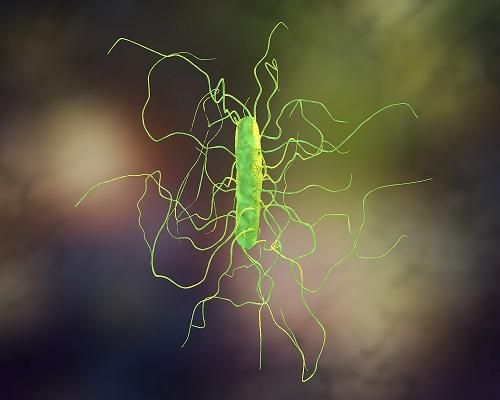Which C diff Diagnostic Test is the Most Specific?
Investigators said their paper was the first systematic review and meta-analysis of C diff infection diagnostic methods in Korea.

The pool sensitivity for Clostridioides difficile (C diff) infection diagnostic test was highest in glutamate dehydrogenase (GDH) enzyme immunoassays (GDH EIAs), according to a paper published in Annals of Laboratory Medicine.
Investigators from Korea conducted a systematic review and meta-analysis in order to investigate the performance of current laboratory diagnostic methods for C diff infection. After searching the PubMed, Web of Science, Cochrane Library, and KoreaMed databases, the investigators identified 39 relevant studies. Those studies included the following diagnostic methods: GDH EIAs, toxin A and B detection by enzyme immunoassays (toxin AB EIAs), and nucleic acid amplification tests (NAATs). The investigators said that the specificity, sensitivity, positive predictive value (PPV), and negative predictive value (NPV) for each diagnostic method were also calculated.
The study authors noted it was the first such systematic review and meta-analysis for C diff infection diagnostic methods in Korea.
The investigators found that GDH EIA and NAAT showed sensitivity and specificity of 90 percent or higher. Additionally, toxin AB EIA had the highest specificity but lowest sensitivity, the authors found.
Combined, the pooled sensitivity of toxin AB EIAs in Korean studies was significantly higher compared to other studies in the rest of the world, the studies authors said. In foreign studies relative to Korea, the pooled specificities of NAATs were significantly higher than those in Korean studies.
NAAT sensitivity was significantly lower in foreign studies than in the Korean studies, the study authors said, but the methods commonly used were analyzed separately. The most commonly used NAAT in Korea, called Xpert C. difficile, was significantly higher than that of all NAATs combined, the authors said.
PPVs were low at low C diff infection prevalence and increased as infection prevalence increased, the study authors determined. Conversely, NPVs were “excellent” when C diff infection prevalence was low and decreased as the prevalence increased. Comparing PPVs and NPVs of assay types revealed no significant differences among GDH EIAs, toxin AB EIAs, and NAATs, the study authors said.
Between the toxin AB EIAs, the membrane-type toxin AB EIAs had relatively higher PPBs at C diff prevalence between 5 and 20 percent than well-type and automated toxin AB EIAs, the study authors said.
When C diff infection prevalence was between 10 and 20 percent, the study authors said NPVs of GDH EIAs, toxin AB EIAs, and NAATs did not differ. At a C diff prevalence of 50 percent, though, NPVs of all types of toxin AB EIAs were relatively low, the study authors noted.
Ultimately, the pooled sensitivities were 92.7 percent, 57.9 percent, and 90.0 percent for GDH EIAs, toxin AB EIAs, and NAATs, respectively, the study authors wrote.
“Our meta-analysis revealed that GDH EIAs had higher sensitivities and narrower sensitivity ranges than toxin AB EIAs,” the study authors said. “Toxin AB EIAs had both low sensitivities and the widest sensitivity range. However, toxin AB EIAs were the most specific tests. NAATs had a stable sensitivity of approximately 90 percent and the narrowest sensitivity ranges.”
Because they were limited to studies published in English or Korean, the study authors also noted there may have been a language bias. Another limitation of the study was that some test types or index tests were analyzed with a small number of studies.
“The data from this study may be useful for C diff infection diagnosis in clinical microbiology laboratories and for clinicians diagnosing and treating C diff infection,” the investigators concluded. “Furthermore, this study provided basic data for establishing a standard C diff infection diagnosis guideline, which will greatly help in the development of national guidelines in Korea.”
